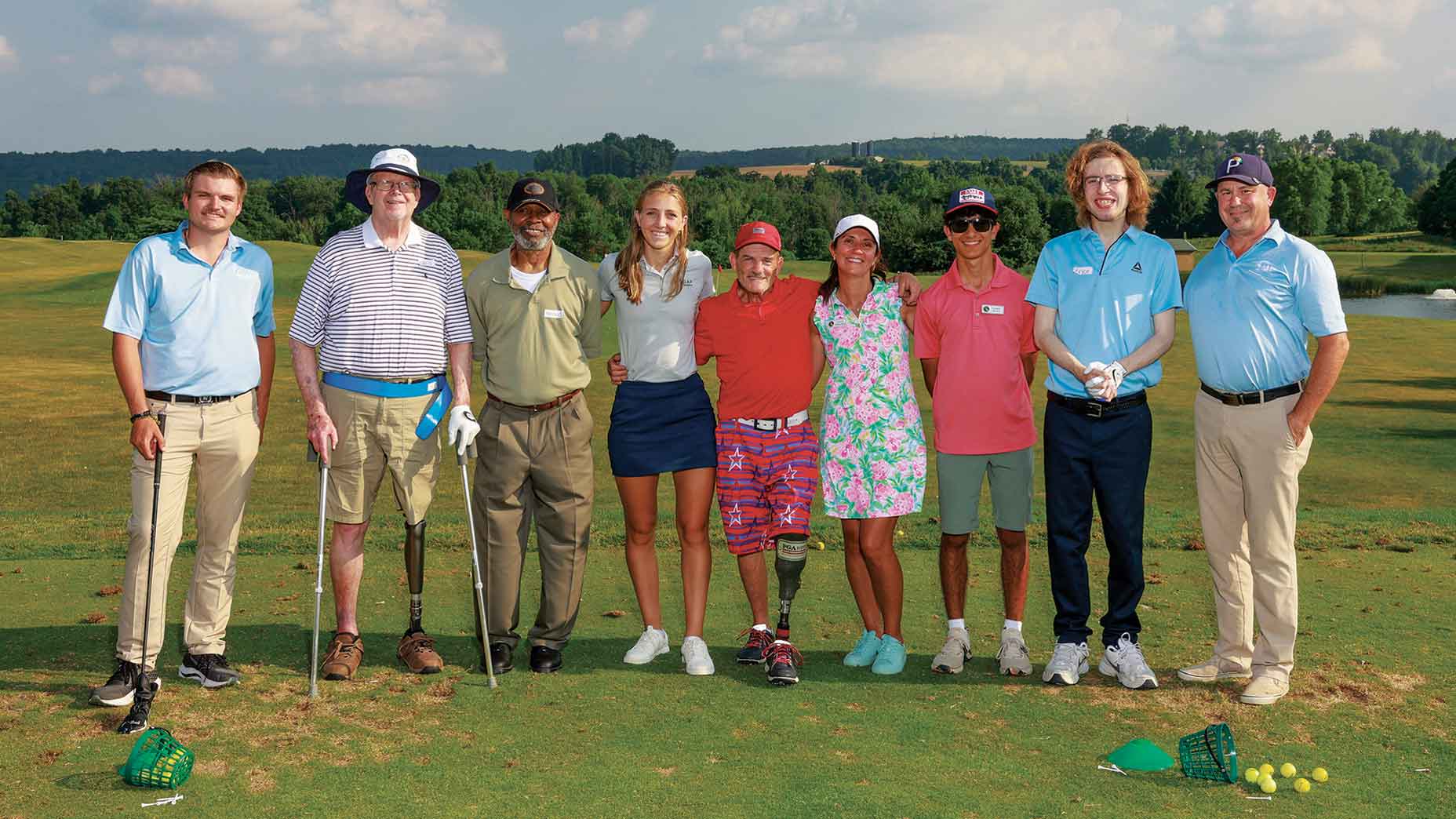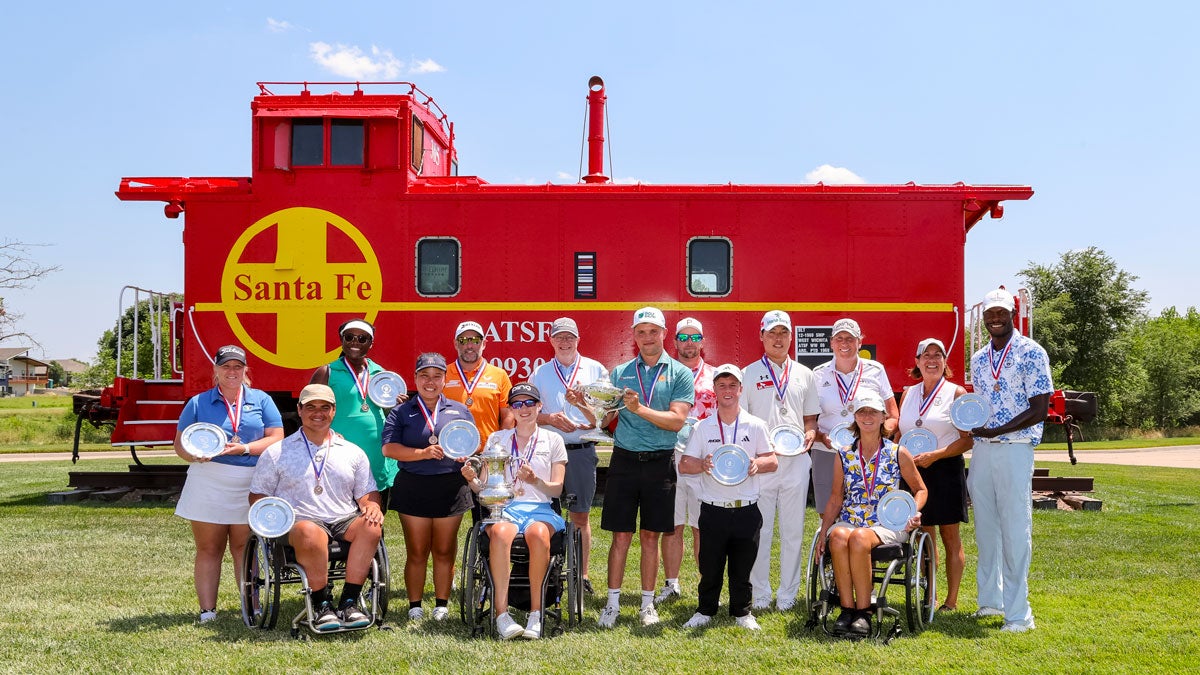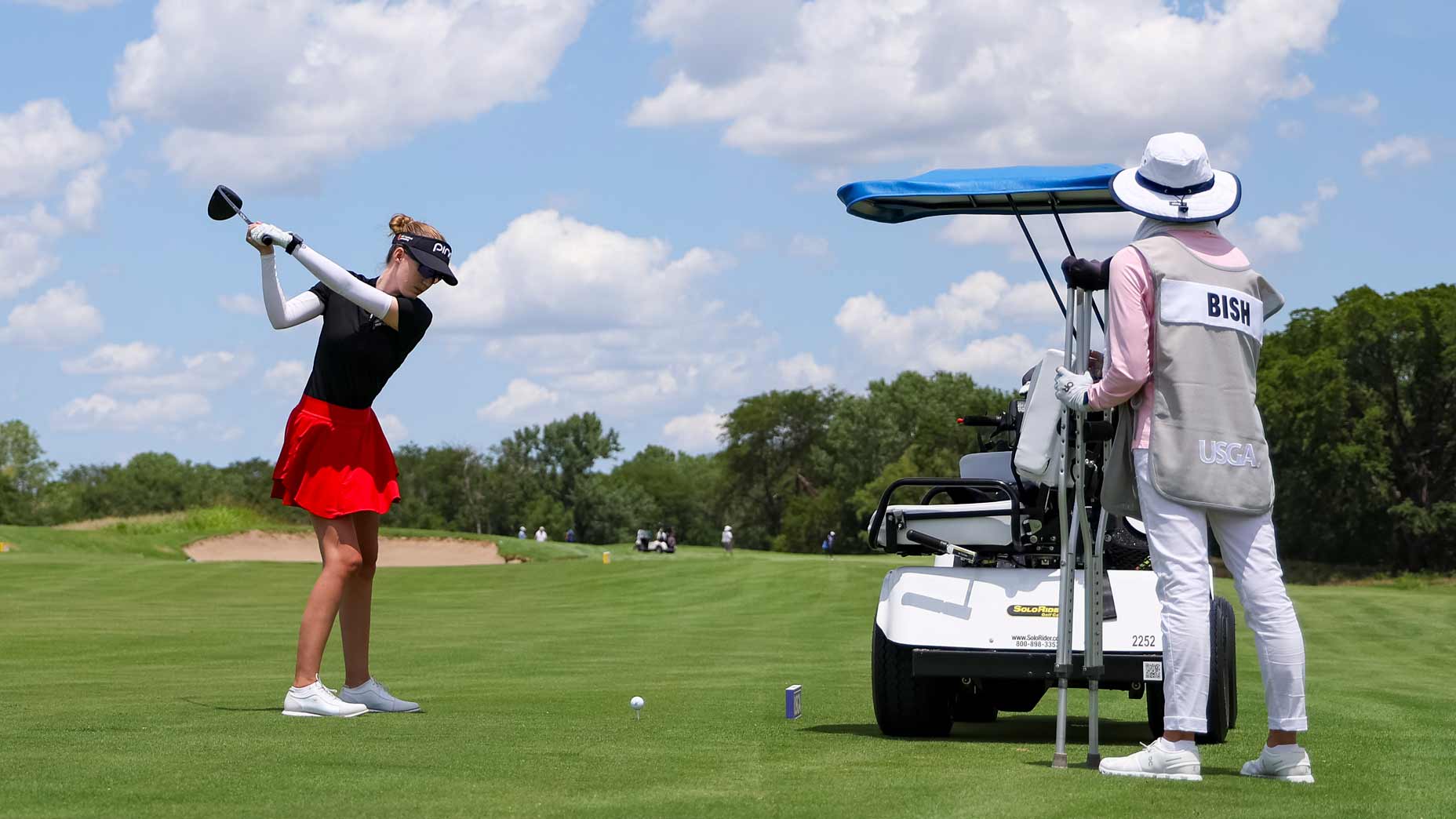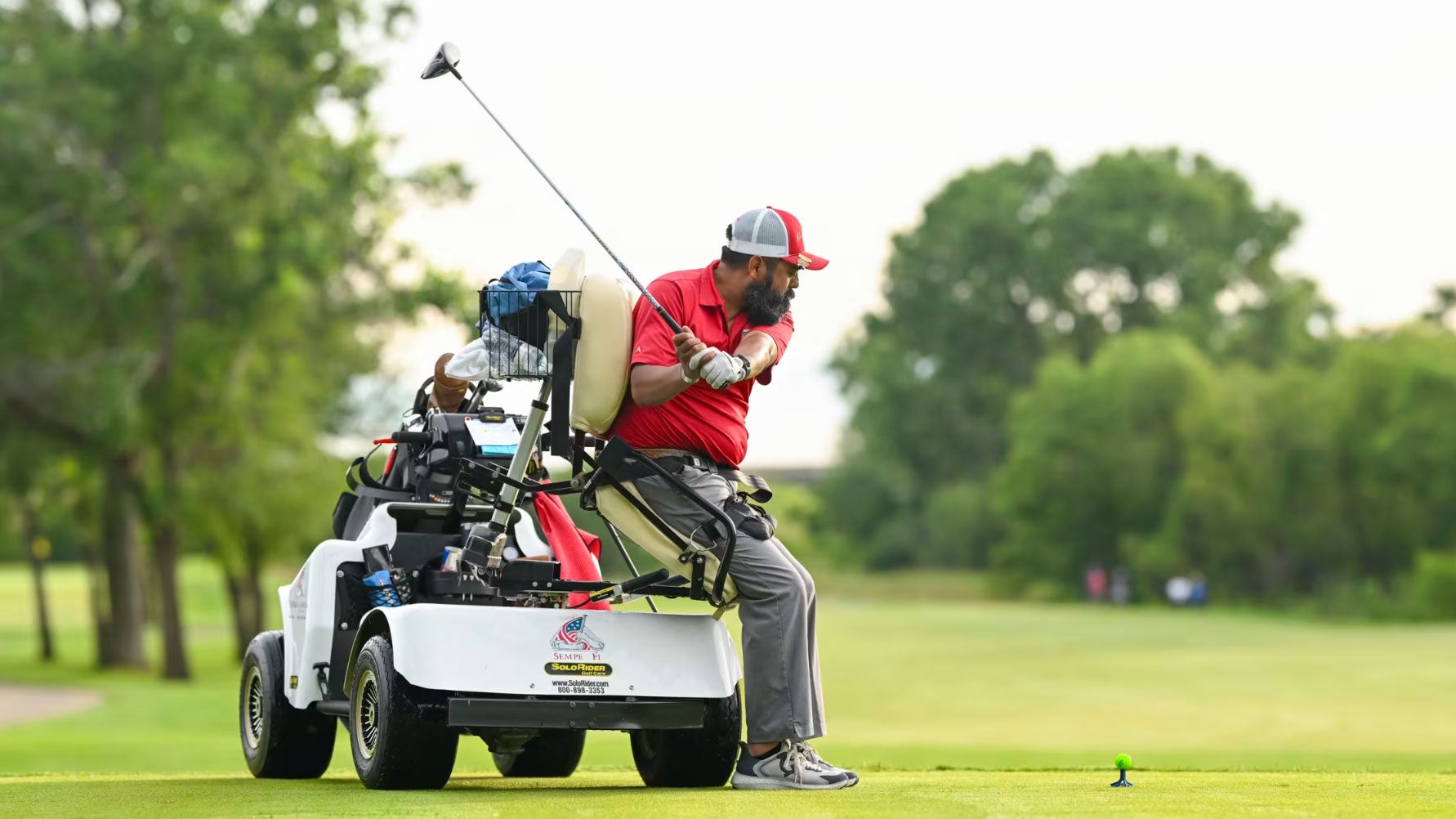At 2nd U.S. Adaptive Open, new stars (and stories) come to the fore
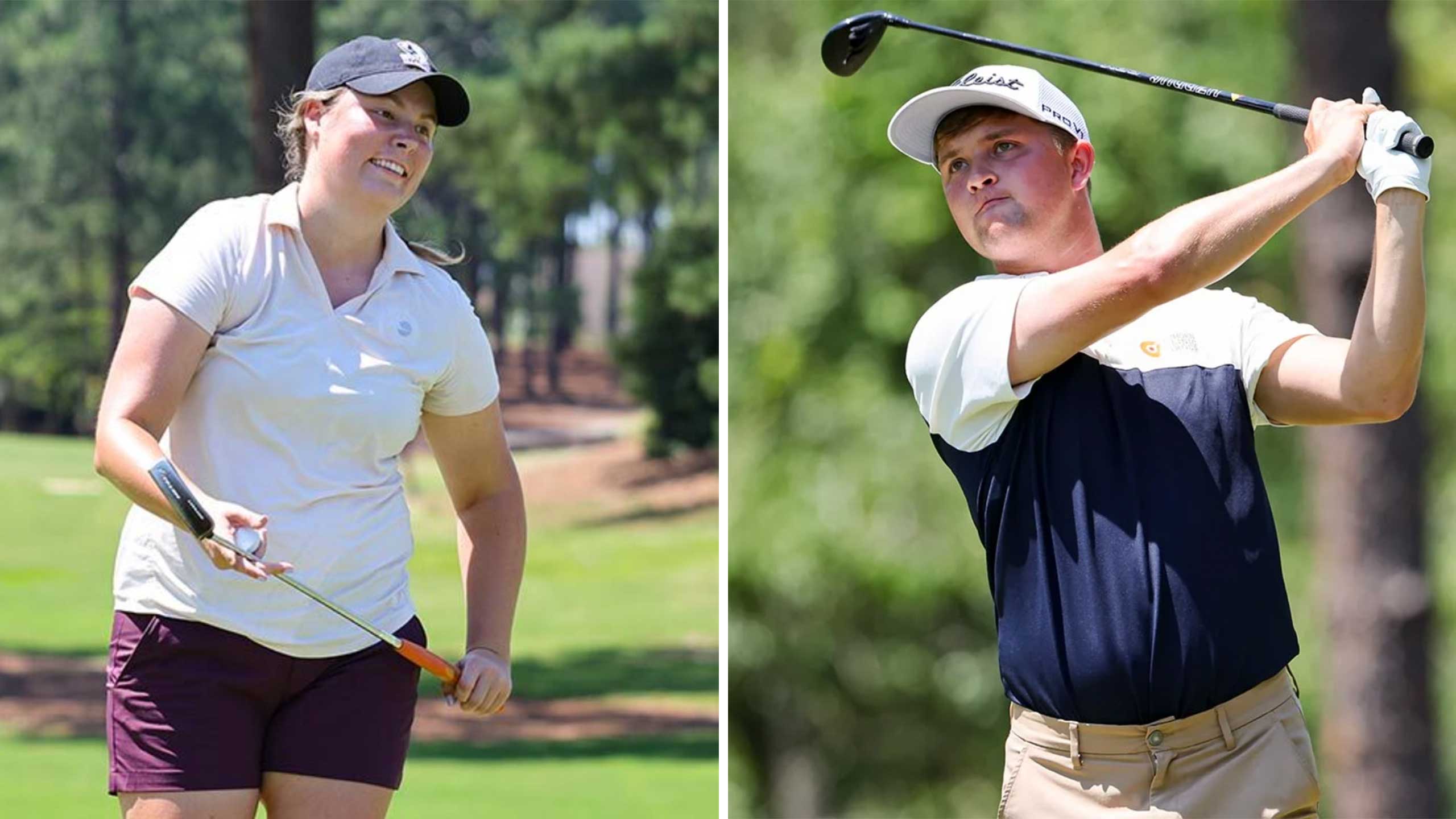
Ryanne Jackson and Kipp Popert won their respective divisions at the U.S. Adaptive Open on Wednesday.
Courtesy USGA/Jeff Haynes
You’ve never seen anything like Wednesday at the U.S. Adaptive Open.
On second thought, maybe you have.
As Kipp Popert, a 25-year-old British pro who has cerebral palsy, walked up the 18th fairway at Pinehurst No. 6, there was a sense of inevitability surrounding his victory. At the second-ever national open for disabled golfers, about the only surprise was that it’d taken two years for Popert to win the event.
“He’s like the Tiger Woods of disabled golf in Europe,” Conor Stone, tournament co-runner-up, said of Popert. “He just runs away with tournaments.”
Popert, who finished at two under in the 54-hole championship, was one of just three players to break par, and even a double-bogey at the last couldn’t derail him.
“Sometimes you got to win ugly,” he joked after his one-shot triumph.
Of course, most of Popert’s play was, in fact, a thing of beauty, with a total of 12 birdies on his cards over three rounds.
Popert’s mantle is quickly running out of space — not unlike a certain 15-time major champion’s — his near wire-to-wire victory at the U.S. Adaptive coming in the wake of a win at the Golf For Disabled Betfred British Masters and a runner-up finish at the R&A’s inaugural Golf For Disabled Open.
“It was nice to keep up with him,” Stone said of Popert. “I don’t think he had his best stuff this week, either, so if he had played better, I think he could have won it by a long way.”
Popert was far from the only winner at what were three blisteringly hot days in Pinehurst. He joined Ryanne Jackson — who has a form of muscular dystrophy — as the victors, respectively, of the men’s and women’s “overall” titles. In addition to the two trophies, the USGA also awarded 15 medals to those who finished as the low scorer in their respective impairment category.
There are 96 competitors in all at the U.S. Adaptive, both men and women, who play under eight impairment categories. Those in the event play by a modified set of USGA rules in order to accommodate their impairments; rules that provide expanded liberties to caddies and club-groundings, among other golf idiosyncracies. Otherwise, the tournament is identical to any other golf competition, in which every stroke, and mistake, counts.
Participants in the event deal with a wide array of impairments, from leg and arm amputees to those with intellectual and neurological disabilities. But there is a strong sense of community among adaptive players across all impairment categories, particularly those who travel far and wide to compete in the small but growing number of overall tournaments.
“I think the USGA getting involved in creating the Adaptive Open has really helped other states open up and create adaptive events,” Jackson, the women’s champion, said, a point that has been reiterated by a number of competitors over the last two years.
Truth is, there’s no event like the Adaptive Open, in ways both good and bad. While the event brings together some of the sport’s most compelling players and stories, it’s also the only tournament of its scope — and barriers to entry do remain.
“I just can’t afford to keep doing this,” said Stone, the tournament’s runner-up. “I am fortunate to have one sponsor who has helped me out, but it’s not enough to cover a whole year, and what my sponsor does is fantastic, but you need five or six sponsors to actually do this for a living.”
The hope is that the USGA’s actions will inspire more action, as it already has with the R&A. But change comes slowly. These days, some impairment groups compete in their own events, like the International Blind Golf Association, while others play most of their golf alongside able-bodied competitors.
“I definitely want young people who are visually impaired, doesn’t matter if they’re boys or girls, to know that there are ways for you to have a lot of fun [in golf],” said Amanda Cunha, the 19-year-old winner of the women’s visually impaired category.
That is true now more than ever. Just three years ago, the adaptive community lived on the golf fringes. Now it is a bonafide piece of the sport’s annual calendar. That is not a source of back-patting, not yet. But it is a source of pride.
“Right now I’m a little emotional,” said Larry Celano, a 54-year-old competitor in the seated player category. “I just think this is the greatest thing. Our whole goal is to come out and not for you to look at us as [having] disabilities but as golfers.”
No week in golf looks like the U.S. Adaptive Open, and maybe that’s a good thing.
The best golf stories aren’t seen — they’re felt.



